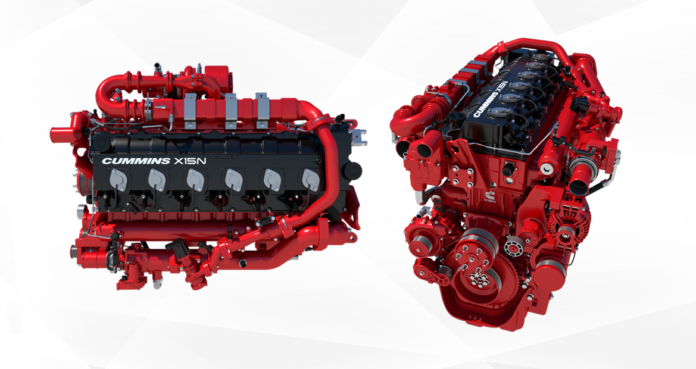Cummins Inc. is releasing a 15-liter natural gas engine for heavy-duty trucks.
“Cummins continues to expand our portfolio of power solutions options so customers can meet their business goals and operational objectives, while also meeting emissions standards and achieving their sustainability goals,” says Srikanth Padmanabhan, president of Cummins’ engine business. “The launch of our universal 15-liter platform for heavy-duty ensures a full range of natural gas powertrains that are available to meet the emission reduction goals of all customers and end markets. Equally exciting is that this engine is also the basis for the recently announced hydrogen internal combustion engine currently being tested that we are developing.”
The 15-liter natural gas engine can be paired with a Cummins Eaton Automated Transmission Technologies Endurant HD Transmission and Cummins Fuel Delivery System, ensuring a purpose-built and fully integrated natural gas powertrain. Other transmission pairings will be available at launch for specialized applications.
The 15-liter engine will offer ratings up to 500 hp and 1,850 ft-lbs. of torque and is expected to weigh 500 lbs. less than comparable 15-liter diesel engines currently available on the market while not requiring Selective Catalytic Reduction (SCR) to meet 2024 California or Environmental Protection Agency emission standards.
“We are bringing this to our customers who have been asking for a natural gas option for long-haul trucking and we are bringing them a very cost-effective and efficient option,” states Brett Merritt, vice president of Cummins’ On-Highway Engine Business. “This engine will not only deliver the excellent performance characteristics that customers expect from Cummins, but also a compelling total cost of ownership experience, coupled with a potential carbon-negative powertrain option when powered with renewable natural gas.”
When powered with renewable natural gas (RNG), using methane collected from organic waste as the primary fuel source, the system can be credited with a neutral to negative carbon index, resulting in net greenhouse gas (GHG) emissions at or below zero.






